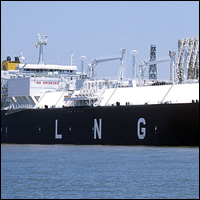Power sector is one of the worst affected segments in the economy due to natural gas shortage. According to a Comptroller and Auditor General (CAG) report which will be placed in the budget session of Parliament, shortage in gas supply has resulted in generation losses to the extent of 66,129.10 million units (MUs) for the period 2008-09 to 2012-13, that is, a loss of around Rs. 30,000 crore. The estimated loss in generation has witnessed an increasing trend and has more than doubled from 25.02 BU in 2009-10 to 73.09 BU in 2012-13. According to Ministry of Power, Power utilities have reported a generation loss of 23.5 billion units during the period April- October 2013. As regards, gas based power plants as against a gas requirement of around 96 MMSCMD (Million Metric Standard Cubic Meter per Day) (at 90% PLF), 24 MMSCMD gas is being supplied to the gas-based power stations in the country. In view of acute shortage of natural gas the Power Ministry was forced to issue advisory to all the developers of power plants to not plan any gas based power plants till 2015-16.
|
State-wise power generation by gas based plants
|
||||||
|
State
|
Installed Capacity
(MW) |
Gas required at 90% PLF
MMSCMD |
Generation (Million Units)
|
|||
|
2010-11
|
2011-12
|
2012-13
|
2013-14*
|
|||
| Haryana |
431.59
|
2.07
|
3155.40
|
3067.72
|
2402.85
|
1066.39
|
| Rajasthan |
973.13
|
6.44
|
4783.90
|
5485.16
|
3837.03
|
2027.12
|
| Delhi |
1958.40
|
9.40
|
3798.99
|
4376.98
|
5392.52
|
2665.72
|
| Uttar Pradesh |
1493.14
|
7.16
|
9769.22
|
9254.69
|
7192.40
|
3170.45
|
| Gujarat |
5653.31
|
28.16
|
27643.83
|
24149.89
|
15394.93
|
4791.41
|
| Maharashtra |
2819.00
|
14.75
|
19033.03
|
17855.76
|
5859.83
|
3870.61
|
| Andhra Pradesh |
3518.40
|
16.91
|
19793.52
|
18217.09
|
10299.72
|
3054.57
|
| Tamil Nadu |
896.3
|
4.30
|
5068.62
|
4934.40
|
4800.19
|
2608.65
|
| Puducherry |
32.50
|
0.16
|
195.45
|
251.46
|
230.76
|
64.78
|
| Assam |
591.70
|
3.19
|
3197.35
|
3102.89
|
3099.67
|
1845.02
|
| Tripura |
595.80
|
3.36
|
1313.42
|
1442.84
|
1396.57
|
764.22
|
| *2013-14 figures are for April – October period only | ||||||
Power sector in Gujarat is the worst affected due to paucity of natural gas. According to Power Ministry data, 2688.5 MW power plants in Gujarat are stranded due to non-availability of gas. In Maharashtra 1,967 MW power plant of Ratnagiri Gas and Power Private Ltd is stranded due to shortage of gas.
|
|||||||||||||||
When Reliance Industries announced discovery of the biggest natural gas reserves in India in 2002 a euphoria erupted among the power developers and many rushed to develop gas based power plants. Today most of them have become NPAs thanks to non-availability of gas. Available data suggest that due to reduction of gas supply from RIL’s KG basin, existing capacity of 4439 MW entirely dependent on KG D6 gas are stranded / out of commission. In addition to this, a capacity of 1334.5 MW has been commissioned but is awaiting gas allocation.
One option available to these power developers, to save their units from getting stranded, is to utilize imported LNG for power generation. However, this option is easier said than done due to non availability of LNG terminals. In late 1990s as many as 15 LNG terminal projects were announced in the western and eastern coast of the country to be completed by 2001-2002. However, most of them backed out and some remained only in books. Only Shell and Petronet LNG went ahead with their projects and completed and their projects became operational after substantial delay. Against the envisaged capacity of 145 MMSCMD only 66 MMSCMD re-gasification capacity has been created so far. Currently India imports 7.5 MMTPA long-term LNG volumes from Qatar. Further, India is importing spot/short term cargoes from Oman, Abu Dhabi, Yemen, Egypt, Algeria, Nigeria, Equatorial Guinea, Norway, Trinidad & Tobago etc.
Even if Reliance Industries is able to increase its natural gas production substantially in the coming years, it may not solve power sector’s problems. On the other hand, it may create further problems as the gas price will be doubled from April this year onwards. So, cost generation will go up substantially and may face resistance from consumers. Thus, there seems to be no immediate solution to the gas based power producers’ problems in the immediate future.
|
|
||||||||||||||||||||||||||||











